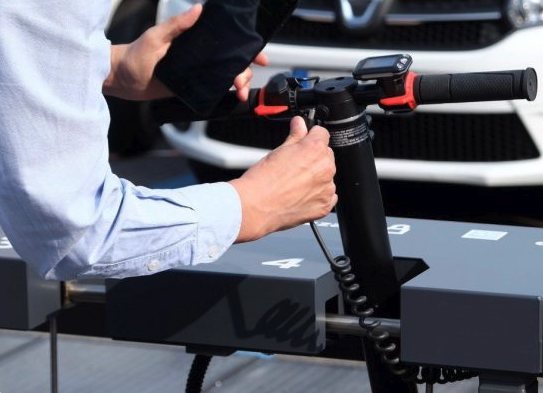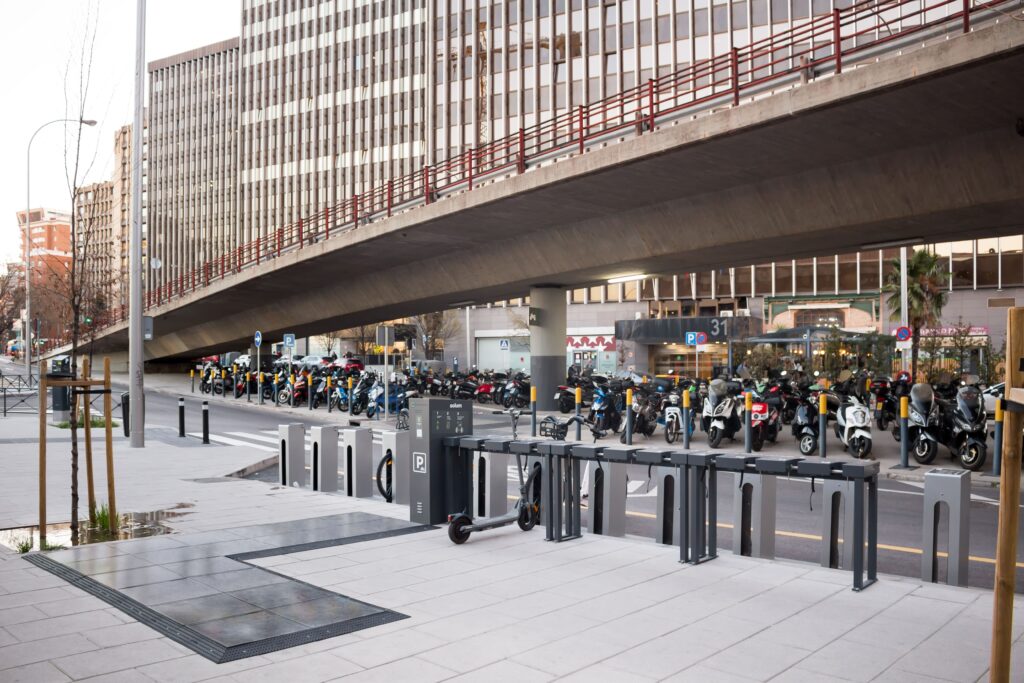Urban mobility is evolving rapidly. More and more people are choosing electric scooters and bicycles as sustainable, efficient, and convenient means of transportation. To truly integrate these vehicles into the urban ecosystem, cities must provide suitable infrastructure for both charging and secure parking.
One of the main challenges for municipal technicians is determining where to install charging stations for electric scooters and bicycles without creating a technical or financial burden. This guide, based on the experience of Solum—a leading company in the sector—explains how energy-autonomous, no-civil-works technology makes implementation significantly easier.
Assessing real charging demand
Before deciding where to install charging stations for electric scooters and bicycles, it’s essential to evaluate whether there is a clear need in the area. In many cases, users resort to improvised solutions such as charging their vehicles inside buildings or securing them to lampposts and railings.
These behaviors highlight the lack of proper infrastructure. Not only do they pose electrical safety risks, but they also disrupt public space. It is therefore essential to act in high-traffic micromobility areas where disorganized parking is a common issue.

The dual need: Charging and secure parking
Charging stations must serve a dual purpose: on one hand, providing efficient energy supply, and on the other, offering secure parking. Electric scooters and bicycles are frequent targets of theft and vandalism when left unattended.
That’s why these stations must meet two core functions:
- Efficient vehicle charging
- Secure and organized parking to prevent vehicles from being left on sidewalks or attached to urban furniture
Where to install charging stations for electric scooters and bicycles? Focus on destination areas
Unlike combustion vehicles, micromobility vehicles do not require constant charging. Therefore, rather than placing stations along routes or sidewalks, it’s more strategic to install them at common destinations, which often coincide with public or municipally managed spaces.
Educational institutions
Universities, high schools, and schools are frequented by many young people who rely on electric scooters. These locations offer enough time for a full charge during class hours.
Public offices and administrative buildings
Installing charging stations in municipal headquarters or government buildings benefits both employees and visitors.
Metro and commuter train stations
In many cities, regulations prohibit taking electric scooters on public transportation. These hubs are therefore critical: users need to leave their vehicles parked, charging, and secure while they complete their journeys by train or metro.
Shopping centers and municipal markets
While users shop or enjoy leisure activities, their vehicles are both protected and charging.
Business parks and office areas
More and more employees are commuting with electric scooters or bikes. Installing charging infrastructure at workplaces improves accessibility and encourages sustainable commuting habits.

Solum: A no-civil-works, solar-powered solution
One of the biggest barriers for municipalities when implementing charging infrastructure is the need for construction work or connection to the power grid. Solum provides an innovative and effective alternative.
Key benefits of Solum charging stations
- Integrated solar panels: These stations operate without being connected to the grid, reducing costs, red tape, and installation time.
- No civil works required: With no need for trenches or electrical permits, installation is quick, clean, and reversible. In many cases, anchoring to the ground is enough.
- Proven experience: With over 900 units installed across 10 countries, Solum’s technology has demonstrated effectiveness in a wide range of urban settings—cities, campuses, business hubs, and shopping centers.
- Modular and secure solutions: These systems protect vehicles from theft or vandalism and can be scaled to meet varying capacity needs.
How can a municipality get started?
For municipal technicians seeking a fast, secure, and sustainable solution, Solum provides a perfectly tailored option. Since no electrical connection is needed, there’s no requirement for complex permitting or costly infrastructure—making this system ideal for pilot projects, budget-conscious plans, or hard-to-access areas.
A smart charging network begins with practical decisions
For electric mobility to continue growing in our cities, accessible and easy-to-deploy charging infrastructure is essential. As a municipal technician, choosing to install charging stations at strategic destinations and opting for solutions like Solum—requiring no civil works or energy consumption—is a key step toward a more sustainable and connected urban environment.








